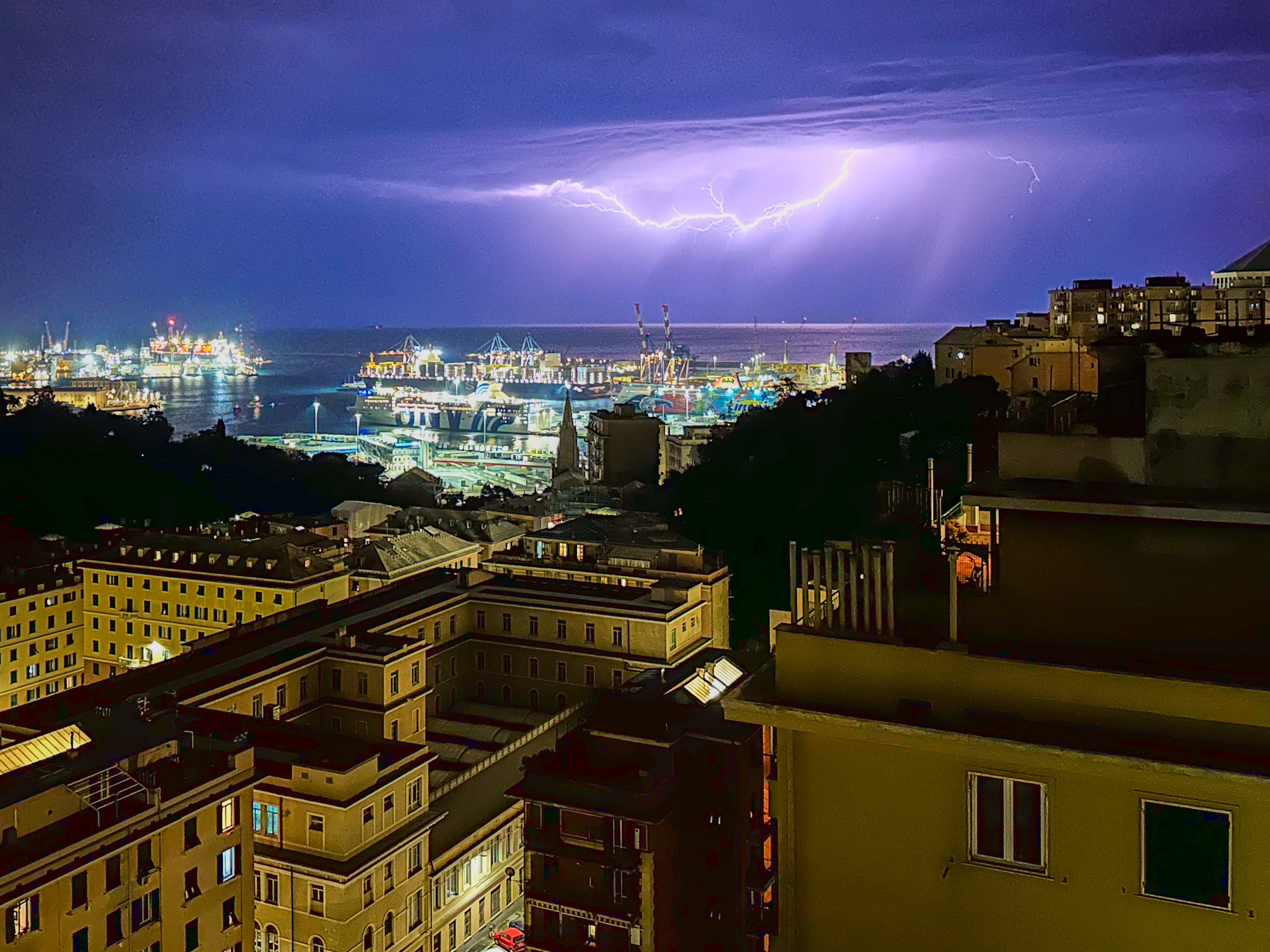Thunderstorm Douses Genoa on Way North

On a midsummer’s evening, the serene port city of Genoa found itself unexpectedly enveloped by a fierce thunderstorm. The tempestuous weather phenomenon, marked by torrential rain and powerful gusts, swiftly moved northward, leaving behind a drenched and somewhat startled Genoa. Thunderstorm douses Genoa on way north, transforming a typically picturesque coastal day into a dramatic display of nature’s raw power.
The Onset of the Storm
The day began with typical Mediterranean warmth, the sun casting a golden hue over the Ligurian Sea. However, as the afternoon progressed, dark clouds began to gather ominously on the horizon. Meteorologists had issued warnings earlier, but few anticipated the severity of what was to come. By late afternoon, the first signs of the impending storm became apparent. Winds picked up, the sky darkened, and the temperature dropped noticeably.
As evening approached, the storm hit with full force. Thunderstorm douses Genoa on way north was the headline that would soon capture the dramatic shift from a tranquil day to a night of elemental fury. Lightning illuminated the sky, followed by thunderclaps that resonated through the city’s ancient buildings. The rain began as a light drizzle but quickly intensified into a deluge, inundating streets and flooding low-lying areas.
The Impact on the City
Genoa, with its narrow alleys and historic architecture, faced significant challenges as the storm progressed. The city’s drainage systems, although robust, struggled to cope with the sheer volume of water. Thunderstorm douses Genoa on way north aptly described the scene as water cascaded down steep streets, forming impromptu rivers that swept away debris and caused localized flooding.
Residents and tourists alike sought shelter wherever they could find it. Cafés, shops, and hotels provided refuge to those caught in the downpour. Emergency services were quickly mobilized, responding to calls of minor injuries and property damage. While the storm was fierce, Genoa’s resilient spirit shone through, with neighbors helping each other and city officials working tirelessly to manage the situation.
Meteorological Insights
The storm that douses Genoa on way north was part of a larger weather system moving across Southern Europe. Experts from the Genoa Weather Observatory explained that such storms, while not uncommon in the region, are typically more prevalent during late summer and early autumn. This particular storm was characterized by a combination of high atmospheric instability and significant moisture content, creating perfect conditions for intense thunderstorms.
Meteorologists noted that the storm’s rapid movement northward was driven by strong upper-level winds. These winds not only facilitated the storm’s swift progression but also contributed to its intensity. The interaction between warm, humid air from the Mediterranean and cooler air masses from the north created a volatile mix, leading to the severe weather experienced in Genoa.
Environmental and Economic Effects
Beyond the immediate impact on daily life, the storm also had broader environmental and economic repercussions. The torrential rain caused soil erosion in some areas, particularly on the city’s outskirts where vegetation is sparse. This erosion could have longer-term effects on local agriculture and natural habitats.
Economically, the storm’s timing was unfortunate. Summer is a peak tourist season in Genoa, with visitors flocking to its historic sites, vibrant markets, and scenic coastline. Thunderstorm douses Genoa on way north led to a temporary halt in tourism activities, with many businesses reporting cancellations and reduced foot traffic. However, the city’s quick recovery efforts and resilient infrastructure helped mitigate long-term economic damage.
The Human Experience
Amid the storm’s chaos, stories of human resilience and community spirit emerged. Locals opened their doors to strangers caught in the rain, and social media was flooded with offers of help and updates on the storm’s progression. One heartwarming account involved a group of tourists from the United States who were taken in by a local family, providing them with dry clothes and a warm meal until the worst of the storm had passed.
Thunderstorm douses Genoa on way north became more than just a weather report; it became a narrative of solidarity and adaptability. For many, the experience was a reminder of nature’s unpredictability and the importance of preparedness and community support.
Moving Forward
As the storm moved northward, leaving a drenched but undeterred Genoa in its wake, attention turned to recovery and prevention. City officials announced plans to review and enhance the city’s drainage systems, aiming to better prepare for future storms. Additionally, local environmental groups emphasized the need for sustainable urban planning to reduce the impact of such weather events.
The storm also sparked discussions on climate change and its effects on weather patterns. Experts pointed out that while individual storms cannot be directly attributed to climate change, the increasing frequency and intensity of such events align with broader climate trends. This incident served as a wake-up call for the need to address environmental issues proactively.
Conclusion
Thunderstorm douses Genoa on way north will be remembered as a day when nature’s fury swept through the historic city, leaving behind a mix of challenges and stories of resilience. The storm tested Genoa’s infrastructure and community spirit, revealing both vulnerabilities and strengths. As the city dries out and life returns to normal, the lessons learned from this event will undoubtedly influence future planning and preparedness efforts.
In the end, Genoa’s response to the storm was a testament to its enduring spirit and capacity to weather even the most unexpected tempests. As the skies cleared and the sun once again shone on the Ligurian coast, the city stood resilient, ready to face whatever the future holds.




